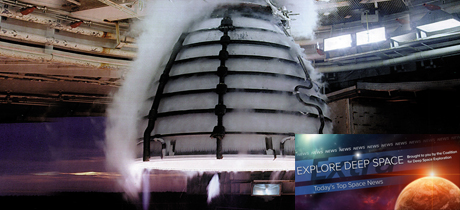In Today’s Deep Space Extra… U.S. Senate appropriations panel sets 2018 NASA spending higher than White House, lower than House of Representatives.
Human Space Exploration
Senate appropriations subcommittee approves $19.5 billion for NASA
Spacepolicyonline.com (7/25): U.S. Senate appropriators moved out on a 2018 NASA funding measure on Tuesday, approving $19.529 billion overall at the subcommittee level, including $2.15 billion for the Space Launch System, with $300 million for Exploration Upper Stage development. Orion would receive $1.3 billion. The U.S. House approved the same amount for the SLS, slightly more for Orion. The appropriations process continues, and the full Senate Appropriations Committee plans a 2018 markup on Thursday. House appropriators have approved $19.872 billion for NASA overall in 2018, though the measure has not come before the full House. The Senate and House totals compare to the White House request of $19.092 billion for 2018 and NASA’s 2017 budget of $19.653 billion.
RS-25 conducts another hot fire as SLS flight engines line up for EM-1
NASAspaceflight.com (7/25): In a step forward for the inaugural launch of the Space Launch System, contractor Aerojet Rocketdyne and NASA’s Stennis Space Center qualified the third of four first stage Honeywell rocket engine controllers on Tuesday.
After a year in space, the air hasn’t gone out of NASA’s inflated module
National Public Radio (7/26): Bigelow Aerospace’s prototype for an expandable module on the International Space Station has performed well more than a year after it was extended for a long running assessment of its performance. The company is hopeful that larger versions could become part of a future space station or deep space habitat.
Space Science
Tupperware, NASA team to grow plants in space
Houston Chronicle (7/25): Tupperware, a household name, is joining NASA in an effort to improve the way plants grown in space are irrigated with minimal astronaut involvement. Plant growth experiments aboard the International Space Station have been under way for several years. The effort could improve the diet of future deep space astronaut explorers and help to recycle their breathing air.
Advanced civilizations could build a galactic internet with planetary transits
Universe Today (7/20): Stellar transits, like those now used by astronomers to search for planets around distant stars, may also afford a means of communication among intelligent civilization, proposes Scottish researcher Duncan Forgan.
Volcanic eruptions rocked Mars’ huge canyon Valles Marineris, study finds
Space.com (7/25): Mars’ Grand Canyon, the 2,500 mile long Valles Marineris, which stretches along the red planet’s equatorial region sports dozens of volcanoes, according to a study of imagery from NASA’s Mars Reconnaissance Orbiter. When active, they could have rocked the region. The volcanic cones appear to be young geologically, perhaps 200 to 400 million years in age, according to the study led by a Czech researcher.
Detecting alien life will likely be a protracted process, not a eureka moment
Seeker.com (7/25): If the scientific method holds, then the process of confirming the existence of intelligent life beyond the Earth is likely to require much patience, according to an assessment led by a Serbian researcher.

